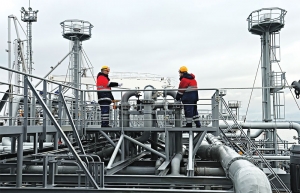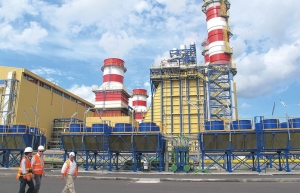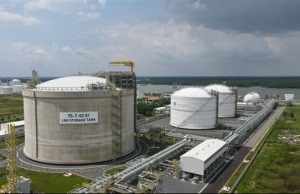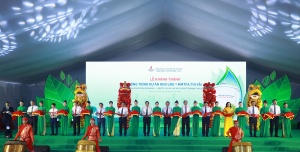High prices anticipate challenges for import of LNG
Based on the Power Development Plan VIII, the Ministry of Industry and Trade (MoIT) projects that the average price of liquefied natural gas (LNG) delivered from the factory during the period 2021-2045 will be approximately $10.6 per million BTU. The cost of electricity production is approximately 9.2 cents per kilowatt-hour at this petroleum price, which is 1.3 cents more expensive than Vietnam Electricity’s (EVN) output. A VAT-extracted average retail price of 8.3 cents per kWh is in effect at present.
 |
| High prices anticipate challenges for import of LNG, illustration photo/ Source: freepik.com |
This price, nevertheless, is less than the cost of LNG currently imported into Vietnam. EVN informed the MoIT at the end of August, in a report, that the cost of imported LNG is 1.5 times that of domestic LNG.
LNG costs approximately $10-12 per million BTU to reach Vietnam, in addition to $2 for storage, reprocessing, and transportation; the cost of delivery to power facilities is $12-14.
PV GAS is the first organisation in Vietnam to receive certification as authorised to import and export LNG. To mitigate for the paucity of domestic gas resources, Huynh Quang Hai, deputy general director of PV GAS, stated at a gas consumption seminar on November 9 that the company was “in negotiations with the world’s leading LNG suppliers to establish a synchronous and efficient LNG supply chain.”
Additionally, PV GAS’s strategy illustrates the constraints of Vietnam’s domestic gas supply. The average annual domestic gas demand for electricity generation, according to Hai, is between 5-6 billion cubic metres per year. However, only about three billion cu.m per year has been supplied thus far.
Since 2020, PV GAS’ capacity to supply gas to the Southeast region has diminished by roughly 30 per cent. Annually, domestic gas extraction output has declined by approximately 10 per cent.
Increasing apprehension regarding fuel scarcity for gas-fired power plants may lead to a reliance on LNG imports for electricity generation. At this time, domestic gas is being allocated to other plants through long-term contracts.
Hai is concerned that this will impede the implementation of his company’s plan to supplement imported LNG for power generation at numerous gas turbine plants. Gas thermal power projects, including Nhon Trach 3 and Nhon Trach 4, with a combined capacity of 1,500MW and an annual demand for LNG gas of approximately one million tonnes (equivalent to 1.2 billion cu.m per year), are anticipated to come online by 2025. To meet this demand, imported LNG will be required to generate electricity.
According to Hai, the committed volume and import time are significant considerations when importing LNG under fixed-term contracts. He is worried that if importers do not use all the LNG they bring in, they could be fined under the contract and not be able to accommodate other ships because they do not have enough storage space.
Phase 1 of the Thi Vai LNG warehouse, which has an annual capacity of one million tonnes and a single LNG tank of 180,000cu.m, was successfully executed by PV GAS in 2023. This expansion will generate an additional 1.4 billion cu.m of gas annually and 5.7 million cu.m daily.
“As of this moment, Vietnam lacks a distinct regulatory framework or mechanism for the development of gas power,” said Hai.
Infrastructure development for the import, storage, and distribution of LNG necessitates substantial financial investment. To guarantee the economic effectiveness for power plants that generate electricity from imported sources, importing LNG for electricity production necessitates more specific policy mechanisms, such as increased openness in the allowable range of electricity prices and long-term trade deals.
Vietnam is emerging as one of Asia’s most promising markets for LNG imports for electricity generation. Dr. Nguyen Quoc Thap, president of the Vietnam Petroleum Association, said, “Having a mechanism to contract power output in accordance with gas volume is critical for the development of imported LNG power projects.”
To secure LNG at a competitive price and guarantee the smooth and efficient operation of the imported power project, it is prerequisite to enter into long-term gas purchase agreements and establish annual gas volumes, according to Thap, also a former deputy general director of PetroVietnam. Consequently, it is critical to commit to electricity and gas output to guarantee the investment effectiveness of the entire project chain, Thap added.
 | Hopes rise for further LNG conversion The successful conversion of coal-fired projects to liquefied natural gas ventures is required to ensure energy security and help Vietnam move towards its net-zero ambitions. |
 | The key factors to take into account for switch to LNG Liquefied natural gas is regarded as a bridge from coal and will see more support in coming years. Lam Nguyen Hoang Thao, senior associate at law firm Russin & Vecchi, talked to VIR’s Nguyen Thu about the coal-to-gas trend, and its benefits and challenges in Vietnam. |
 | Vietnam’s biggest LNG terminal becomes operational The 1 million-tonne Thi Vai liquefied natural gas (LNG) terminal project, the biggest of its kind in Vietnam, was officially put into operation in the southern province of Ba Ria - Vung Tau on October 29. |
 | PV GAS inaugurates Thi Vai LNG Terminal On October 29, PetroVietnam Gas Corporation (PV GAS) held a ceremony to inaugurate Thi Vai Liquefied Natural Gas (LNG) Terminal at Cai Mep Industrial Park in the southern province of Ba Ria-Vung Tau. |
What the stars mean:
★ Poor ★ ★ Promising ★★★ Good ★★★★ Very good ★★★★★ Exceptional
Related Contents
Latest News
More News
- Heavy industries set for pilot greenhouse gas quotas (December 25, 2025 | 10:00)
- Swedfund invests in MSME growth and climate action in Vietnam (December 19, 2025 | 11:42)
- GreenYellow brings solar energy to light up remote schools in Tuyen Quang province (December 19, 2025 | 08:00)
- Charge+, Grab partner to develop EV charging network in Vietnam (December 18, 2025 | 17:11)
- Linking sci-tech and innovation to Vietnam’s net-zero future (December 18, 2025 | 14:31)
- Driving double-digit growth through green and circular transformation in Vietnam (December 17, 2025 | 09:00)
- Standard Chartered and ACCA deepen collaboration to develop Vietnam’s talent for a sustainable future (December 15, 2025 | 18:18)
- Schaeffler reports strong early output from Dong Nai solar project (December 12, 2025 | 15:16)
- Forestry conference highlights biodiversity and sustainability goals (December 09, 2025 | 13:35)
- Home Credit honoured among top 10 sustainable companies in trade and services (December 09, 2025 | 12:18)

 Tag:
Tag:




















 Mobile Version
Mobile Version